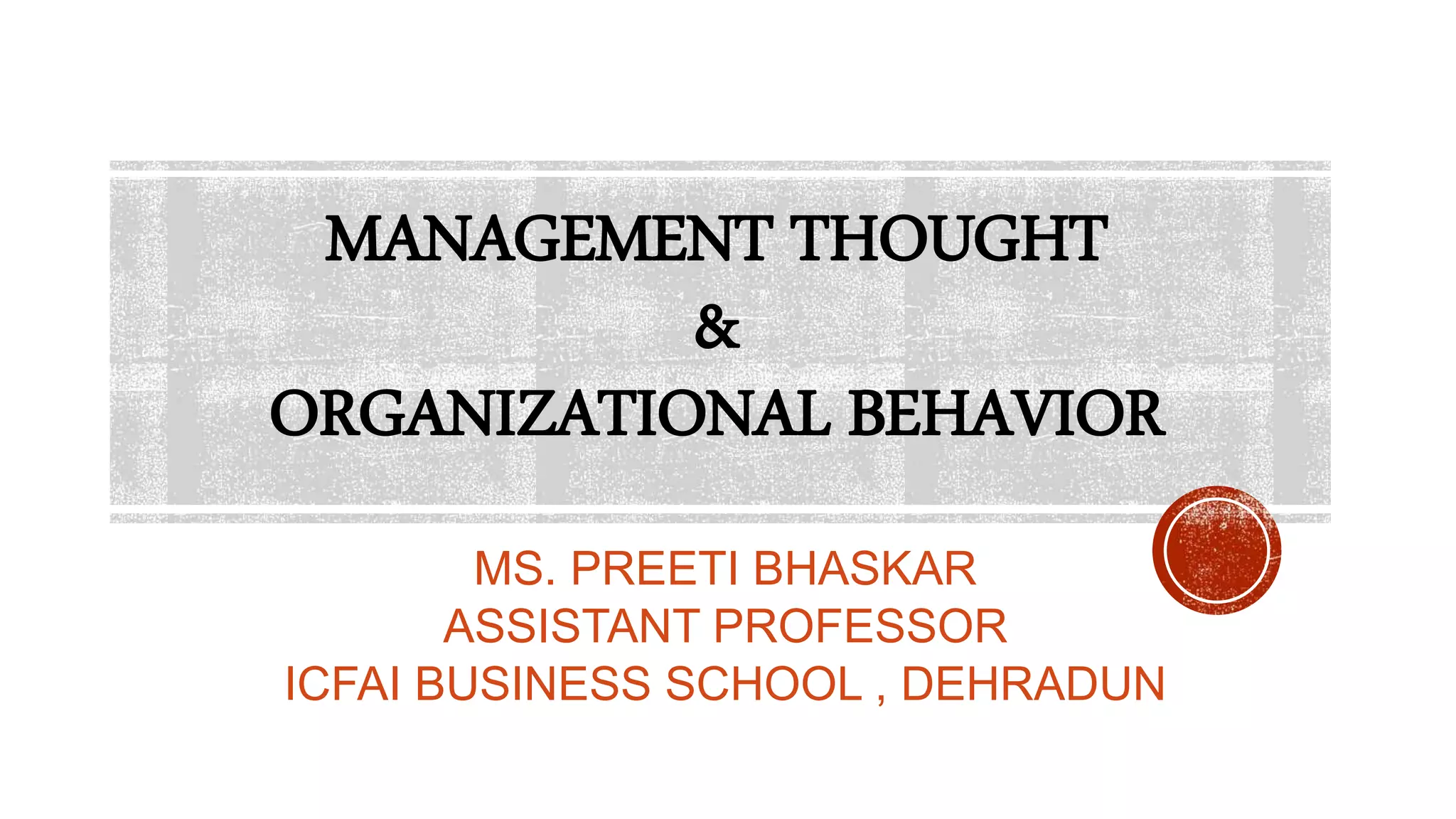The document discusses key concepts in organizational behavior and management thought. It defines organizational behavior as the study of human behavior in organizational settings and the interface between human behavior and organizations. It discusses approaches to management such as classical, behavioral, and quantitative. Classical theorists discussed include Taylor, Fayol, and Weber. The Hawthorne studies are summarized along with fields contributing to organizational behavior like psychology and sociology. Managers' roles and functions are outlined. The document also covers topics like organizational behavior in the context of globalization and managing workforce diversity.











































